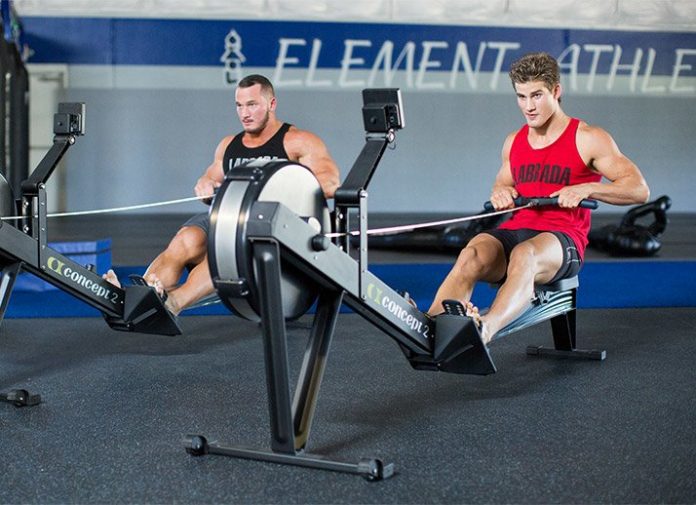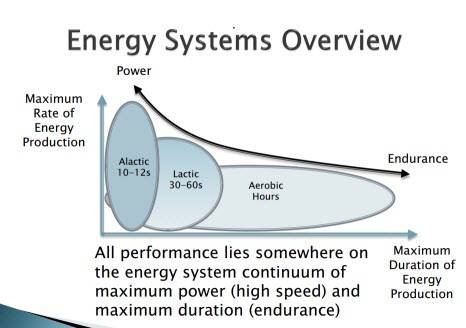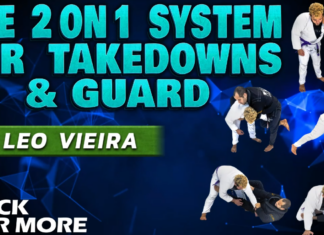
Cardio For BJJ is all about balance. You can’t just train one energy system and ignore the rest. In order to develop the best possible cardio for BJJ, you need to train everything in a smart way. This is how you need to train cardio for BJJ.
The most hated part of BJJ for everyone involved in it is the tap. At first, people hate the tap because they tap with their ego before anything else. Later on, when they get good at Jiu-Jitsu, even as people start to learn through tapping, they still try to avoid it as much as possible. It is only normal, seeing as no one wants to admit defeat, no matter how great ego control they have. However, even all taps are not the same. There’s tapping to a perfectly executed move you couldn’t counter. Legit. There’s tapping because you made a blunder and gifted a submission to your opponent. Also legit. And then there’s the cardio tap. The one tap all grapplers universally hate. But fear not, there is a great defense! It is called cardio for BJJ.
Before getting to the meat and potatoes of the subject, let’s make something clear. Cardio for BJJ is not as simple as going for a run or endless paddling on an elliptical. Much like grappling martial arts, conditioning for the mats is a complex subject. You wouldn’t go and compete in BJJ without any experience whatsoever, would you? First, you’ll need to understand what it is and what you’re going to need in order to be competitive. it is the same with cardio for BJJ. In order to build a huge gas tank for grappling, first, you have to understand how to approach the subject. Then, you can worry about what to do in order to achieve your goals.
What Are Energy Systems?
Energy systems are the complex physiological mechanisms our bodies use in order to fulfill energy demands. Now, energy requirements vary according to both overall activity and specific demands. You need the energy to get up, stay awake, work, eat, even when you sleep. However, the type of energy you need demands very much on the circumstances. Short and explosive movements do not require the same energy output as longer and slower paced activities. In those terms, sprinting requires different energy systems to work, compared to walking your dog.
Most sports or types of exercise can be divided into two categories: aerobic and anaerobic. Aerobic exercise is any activity that can be maintained continuously for a long duration, such as marathon running and/or skipping rope. Anaerobic exercise looks like things such as sprinting or weightlifting. During anaerobic exercise, glycogen is used as fuel, and the exercise is intense enough to trigger lactic acid fermentation.
BJJ is one of the rare sports that require both the aerobic and anaerobic energy systems. Knowing or practicing only one aspect of the sport is going to result in poor performance. For example, an MMA fighter who does not train grappling is not going to make it far. The same holds true in training cardio for BJJ. An athlete with good anaerobic capabilities is going to find himself struggling without the proper aerobic conditioning, and vice versa.
1. Aerobic Energy System Training
Aerobic exercise is a low-intensity activity done for long periods of time. During this time, the body taps into the aerobic energy-generating process. Aerobic activities are normally done at 60-65% of the grappler’s maximum heart rate. In order to meet the energy requirements, the body relies on oxygen using aerobic metabolism. The most common examples of aerobic activity are long-distance running and cycling.
In terms of cardio for BJJ, the time period of a match can vary from five to ten minutes, and even more. It is impossible for someone to sprint for five minutes. During a grappling match, there are periods of time when it feels like a sprint. However, these periods are short and then the pace usually slows down. When the pace is slower you are back on aerobic territory. If you do not have the ability to last long in aerobic conditions you are going to suffer because of it. So, all that long distance running you’re doing does have an effect, but it is not enough on its own.
2. Anaerobic Energy System Training
The anaerobic energy system is a more complex one than the aerobic and is in turn divided into two further sub-systems. It is important to note that all energy systems work in unison, feeding off each other. You can’t use one exclusively without engaging the others. In anaerobic terms, this is even more important, since there’s no oxygen to act as a fuel source.
Anaerobic exercise is a short, high-intensity activity where your body’s demand for oxygen exceeds the oxygen supply available. Therefore, anaerobic exercise is not dependent on oxygen. Some examples of anaerobic exercise are Powerlifting, sprinting, and interval training. In grappling martial arts, anaerobic energy is important for quick, explosive movements. A good example is what you experience in a scramble. Scrambles are short fast and unpredictable, requiring the support of the anaerobic energy system. You can’t have cardio for BJJ without working on the anaerobic system during your conditioning.
Depending on the duration and the fuel used instead of oxygen, the two anaerobic systems are lactic and alactic. Both have their place in the bigger picture, the latter for maximum effort short duration situation, while the former for medium intensity longer duration (think submission attempts).
Cardio For BJJ
The goal of both your anaerobic and aerobic BJJ training should be to gain muscular endurance in the specific patterns you will use on the mat. In order to be successful on the mat, you must train both energy systems, and the first step to doing so is an assessment. This can be as simple as taking a look at your current training.

It is also important to keep your training in the correct context. Your number one priority is BJJ. You are not a marathon runner. Therefore, a purely aerobic workout for BJJ is not going to look the same as one for a runner. The longest match for a black belt competing in the IBJJF is ten minutes. The shortest match duration is five. So, make sure you train for the appropriate “distance.”
The same approach holds true for anaerobic training. BJJ athletes are not training for track and field events. You do not need to spend hours sprinting. How fast you can sprint means nothing when you step on the mat. There is one best way to prepare the body for BJJ – match the movements of the sport to your off-the-mat training. The goal of both your anaerobic and aerobic BJJ training should be to gain muscular endurance in the specific patterns you will use on the mat.
Programming Cardio For BJJ
Brazilian Jiu-Jitsu is a complex sport that requires the body to tap into its aerobic and anaerobic energy systems. To be fully prepared for this, make sure you include both aerobic and anaerobic training in your program. This will help you to build a larger engine, allowing you to train for longer and at a higher intensity. Not to mention you’ll be better prepared to come competition day.
Related Articles:
Use The Tap For Lightning-Quick Progress In Jiu-Jitsu
Melt Fat Off And Get In BJJ Shape Fast With This Program
How To Train Outside Of Jiu-Jitsu To Get In Fighting Shape
Quick Jiu-Jitsu Conditioning Workouts For Busy People
The Best Way Of Cutting Weight & Avoiding Common Mistakes
The Perfect Strength And Conditioning Workout For BJJ by T. Stevens


![Darce Choke Encyclopedia – Origins, Mechanics and Variations [2025] BJJ, choke, Brabo, BJJ Darce Choke, D'arce Choke, Darce BJJ Choke](https://bjj-world.com/wp-content/uploads/2017/11/JungPoirierLeeYahoo-218x150.jpg)










![Slicin’ Calves Mikey Musumeci DVD Review [2025] Slicin' Calves Mikey Musumeci DVD Review](https://bjj-world.com/wp-content/uploads/2025/04/slicin-calves-mikey-musumeci-dvd-review-218x150.png)
![Jiu-Jitsu For Old Guys Guard Retention Bernardo Faria DVD Review [2025] Jiu-Jitsu For Old Guys Guard Retention Bernardo Faria DVD Review](https://bjj-world.com/wp-content/uploads/2025/03/old-guys-guard-retention-bernardo-faria-dvd-review-218x150.png)
![X-Guard Trickery Kyle Sleeman DVD Review [2025] X-Guard Trickery Kyle Sleeman DVD Review](https://bjj-world.com/wp-content/uploads/2025/03/x-guard-trickery-kyle-sleeman-dvd-review-218x150.png)
![Countering with Crab Ride Anthony Budion DVD Review [2025] Countering with Crab Ride Anthony Budion DVD Review](https://bjj-world.com/wp-content/uploads/2025/03/countering-with-crab-ride-anthony-budion-dvd-review-218x150.png)
![Closet Closed Guard Craig Jones DVD Review [2025] Closet Closed Guard Craig Jones DVD Review](https://bjj-world.com/wp-content/uploads/2025/03/closet-closed-guard-craig-jones-dvd-review-218x150.png)
![Xanadu Back Takes Levi Jones-Leary DVD Review [2025] Xanadu Back Takes Levi Jones-Leary DVD Review](https://bjj-world.com/wp-content/uploads/2025/03/xanadu-back-takes-levi-jones-leary-dvd-review-218x150.png)

![Dynamic De La Riva Guard Otavio Sousa DVD Review [2025] Dynamic De La Riva Guard Otavio Sousa DVD Review](https://bjj-world.com/wp-content/uploads/2025/02/dynamic-de-la-riva-guard-otavio-sousa-dvd-review-100x70.png)
![No-Gi Grapplers Guide To Front Headlock Joel Bane DVD Review [2025] No-Gi Grapplers Guide To Front Headlock Joel Bane DVD Review](https://bjj-world.com/wp-content/uploads/2025/03/no-gi-front-headlock-joel-bane-dvd-review-100x70.png)

![Tiny Woman Guide To The Guard Ann Kneib DVD Review [2024] Tiny Woman Guide To The Guard Ann Kneib DVD Review](https://bjj-world.com/wp-content/uploads/2024/11/tiny-woman-guide-to-the-guard-ann-kneib-dvd-review-100x70.png)
![Countering with Crab Ride Anthony Budion DVD Review [2025] Countering with Crab Ride Anthony Budion DVD Review](https://bjj-world.com/wp-content/uploads/2025/03/countering-with-crab-ride-anthony-budion-dvd-review-100x70.png)




![Jeff Glover Deep Half Revolution DVD Bundle Review [2024] Jeff Glover Deep Half Revolution DVD Bundle Review](https://bjj-world.com/wp-content/uploads/2024/10/jeff-glover-deep-half-revolution-dvd-bundle-review-100x70.png)
![Jeff Glover DVD Bundle Review: Chokin’ Around With Uncle Jeff [2024] Jeff Glover DVD Bundle Review: Chokin' Around With Uncle Jeff](https://bjj-world.com/wp-content/uploads/2024/10/jeff-glover-dvd-bundle-review-chokin-around-100x70.png)




![How to Double Leg Anyone Kevin Lee DVD Review [2024] How to Double Leg Anyone Kevin Lee DVD Review](https://bjj-world.com/wp-content/uploads/2024/11/how-to-double-leg-anyone-kevin-lee-dvd-review-100x70.png)
![Jiu-Jitsu For Old Guys Guard Retention Bernardo Faria DVD Review [2025] Jiu-Jitsu For Old Guys Guard Retention Bernardo Faria DVD Review](https://bjj-world.com/wp-content/uploads/2025/03/old-guys-guard-retention-bernardo-faria-dvd-review-100x70.png)

![Efficiently Executing X-Guard Giancarlo Bodoni DVD Review [2024] Efficiently Executing X-Guard Giancarlo Bodoni DVD Review](https://bjj-world.com/wp-content/uploads/2024/09/efficiently-executing-x-guard-giancarlo-bodoni-dvd-REVIEW-100x70.png)
![Knee Lever John Wayne Sweep Adam Wardzinski DVD Review [2024] Knee Lever John Wayne Sweep Adam Wardzinski DVD Review](https://bjj-world.com/wp-content/uploads/2024/12/john-wayne-sweep-adam-wardzinski-dvd-review-100x70.png)
![Breaking Their Guard Mikey Musumeci DVD Review [2025] Breaking Their Guard Mikey Musumeci DVD Review](https://bjj-world.com/wp-content/uploads/2025/02/breaking-their-guard-mikey-musumeci-dvd-review-100x70.png)

![Closet Closed Guard Craig Jones DVD Review [2025] Closet Closed Guard Craig Jones DVD Review](https://bjj-world.com/wp-content/uploads/2025/03/closet-closed-guard-craig-jones-dvd-review-100x70.png)
![X-Guard Trickery Kyle Sleeman DVD Review [2025] X-Guard Trickery Kyle Sleeman DVD Review](https://bjj-world.com/wp-content/uploads/2025/03/x-guard-trickery-kyle-sleeman-dvd-review-100x70.png)
![Darces From Everywhere Kade and Tye Ruotolo DVD Review [2024] Darces From Everywhere Kade and Tye Ruotolo DVD Review](https://bjj-world.com/wp-content/uploads/2024/10/darces-from-everywhere-kade-and-tye-ruotolo-dvd-cover-100x70.png)


![Double Sleeve Guard Jon Thomas BJJ DVD Review [2024] Double Sleeve Guard Jon Thomas BJJ DVD Review](https://bjj-world.com/wp-content/uploads/2024/10/double-sleeve-guard-jon-thomas-bjj-dvd-review-100x70.png)